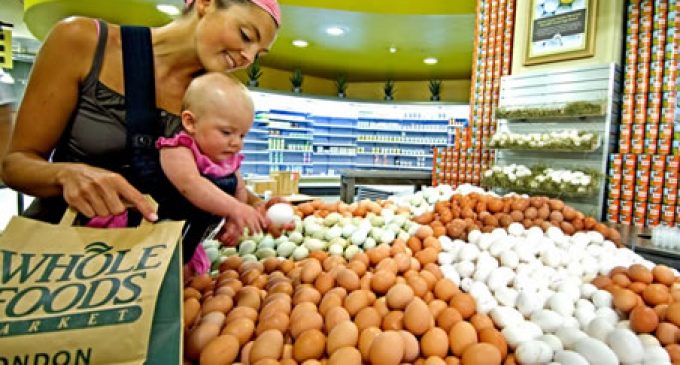Food retailing to polarise around premium and value

Food retailing will become increasingly polarised into value and premium sectors, with middle ground players struggling to retain market share, due to the rise of the hybrid consumer, predicts a news report from Rabobank.
Consumers are becoming less interested in mid-market products, preferring to trade down when it comes to everyday value-for-money items, such as basic groceries, according to the report, which Rabobank claimed would have significant implications for food companies, food retailers and foodservice companies.
Cash-savvy shoppers will use the money saved by trading down on staples to trade up to premium, high-end products that matter most from an emotional and social perspective. Premium brands in supermarkets and fine dining are set to benefit, while middle ground players will come under yet more pressure.
‘Adapt or risk fading away’
Marc Kennis, senior analyst, Rabobank Food & Agribusiness Research and Advisory, said: “Food processors, food retailers and foodservice companies alike will need to adapt or risk fading away.
“The implications of this market trend are profound and touch on areas such as product offerings, distribution channels, marketing and brand management. Given the driving forces of hybrid consumption – such as women’s increasing role in household spending and the growing importance of millennials [people born at the end of the past century] – we believe that hybrid consumption is a long-lasting phenomenon.”
The influence of hybrid consumer patterns could already be seen in retailers’ performance, claimed Rabobank. Those geared towards the mid-market were showing lower growth rates over a longer period than their peers at the premium and value ends of the spectrum.
Morrisons, Tesco, Sainsbury and Asda
“Growth rates at mid-market operators, such as Morrisons, Tesco, Sainsbury and Asda, have been clearly lower than at discounters such as Aldi and Lidl as well as upmarket retailers, such as Waitrose,” said the report.
Rabobank identified three key strategies it said would allow food processors, food retailers and foodservice companies to benefit from the hybrid consumer trend.
Those were:
• Move up to the premium segment of a specific product category. Examples included: offering healthier alternatives, using more natural ingredients and incorporating corporate social responsibility. French spirits firm Pernod Ricard had successfully premiumised its product offering.
• Offer ‘value’ products within the premium segment and ‘premium’ products within the value segment. That would allow retailers to woo consumers who have become more cost-conscious due to falling incomes and buying power. For example: Waitrose offered bakery products under a premium own-label, enabling cash-savvy customers to continue shopping at the high-end supermarket but at a lower cost.
• Use value products to sell premium products. This strategy would allow supermarkets and foodservice outlets to attract customers with value-for-money propositions, while also selling them premium, more expensive products to these same customers. A UK-based coffee chain offered coffee to-go at a relatively low price to generate traffic, while aiming to sell premium sandwiches.
Meanwhile, a key factor driving the trend was that “women are more objective than men when it comes to food purchasing decisions” according to research, said Rabobank. Do you agree? Take part in our fun quiz to test your opinion against the views of others.
Three forces driving hybrid consumer trend
• Socio-demographic developments. The growth of women’s purchasing power and increasing influence over household spending. Research suggests “women are more objective than men when it comes to food purchasing decisions”. Also younger generations, familiar with social media, were more likely to make food choices based on merits than brand loyalty.
• Food retailer strategies. The discount trend has added to consumers’ options to trade down, while own-label products have increased trading up options.
• Macro-economic developments. Falling incomes and confidence have both encouraged trading down on basic items. But consumers still want to occasional indulges.
Source: Rabobank


































